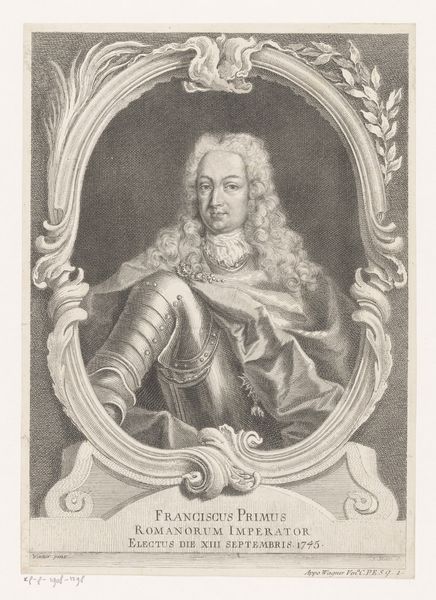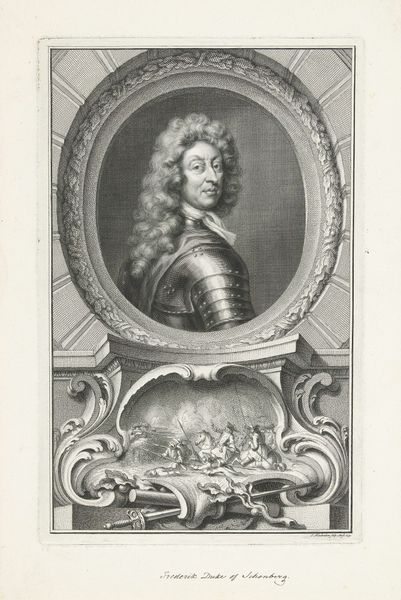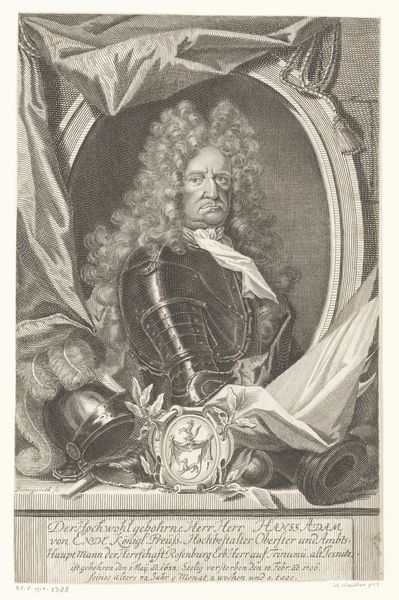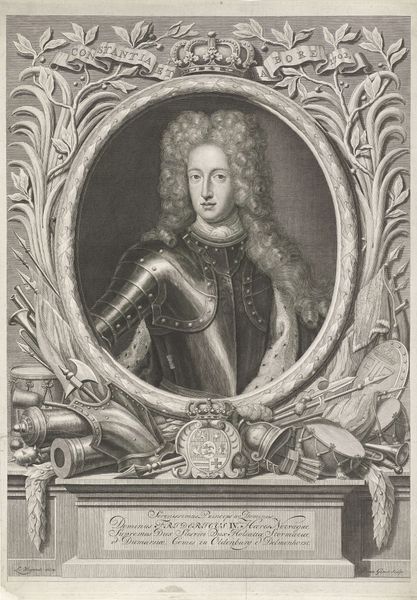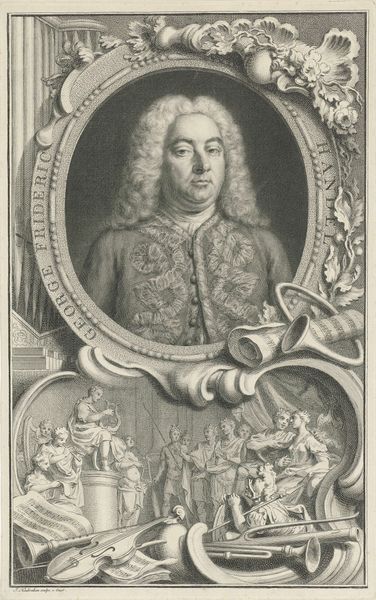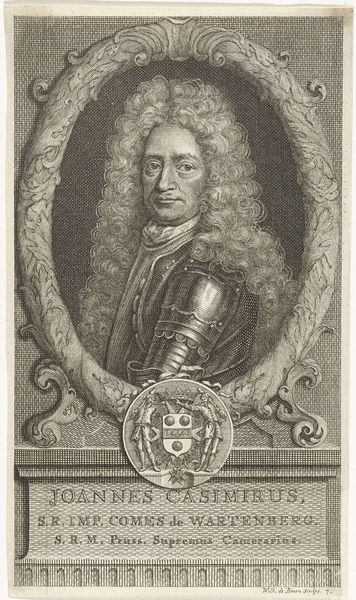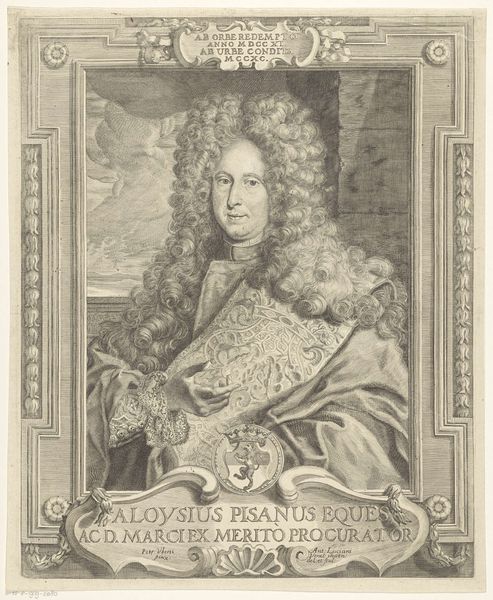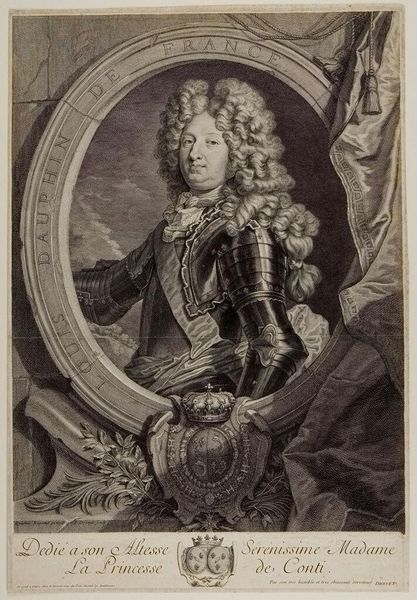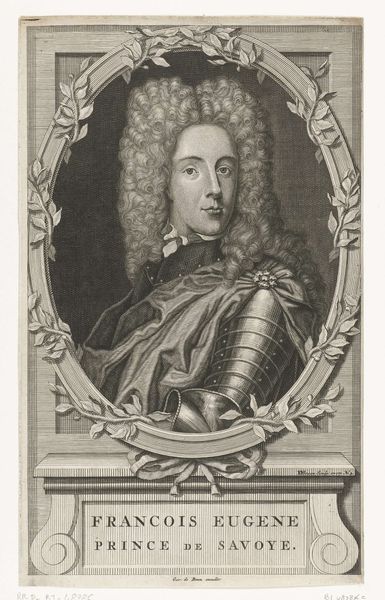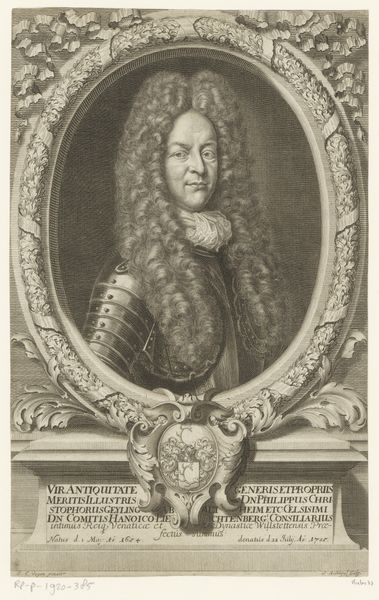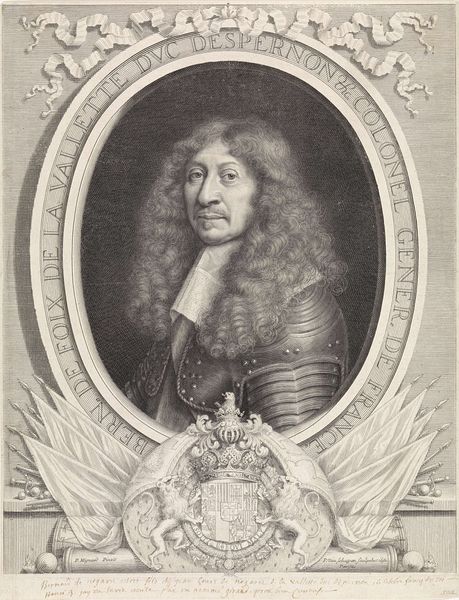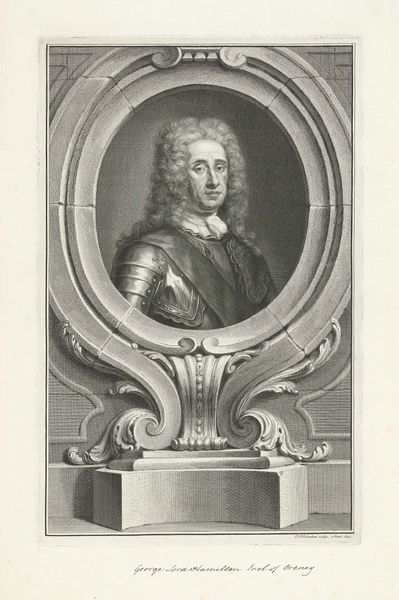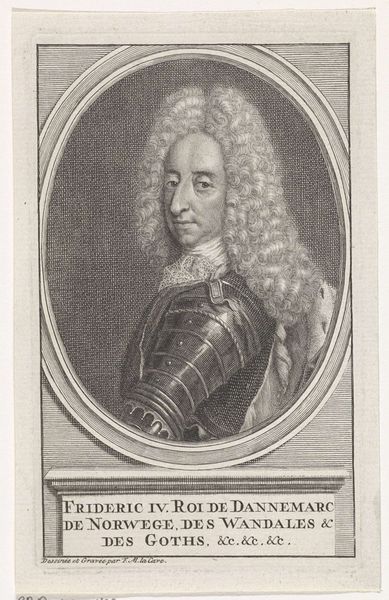
print, engraving
#
portrait
#
baroque
# print
#
old engraving style
#
history-painting
#
engraving
Dimensions: height 367 mm, width 231 mm
Copyright: Rijks Museum: Open Domain
Editor: This is Jacob Houbraken’s “Portrait of Charles Mordaunt,” made between 1741 and 1743. It's an engraving, and it’s really striking how formal it is, almost staged, yet the detail is incredible. What’s your take on this, particularly the way power is represented? Curator: I see a very deliberate construction of masculinity and authority, embedded in layers of historical and social meaning. Consider Mordaunt’s armor, not merely protective gear but a symbol of military prowess, perpetuating a patriarchal narrative deeply entwined with warfare and conquest. Editor: Right, the armor is a powerful symbol. But what about the cherub? It feels… out of place? Curator: It complicates the image, doesn't it? Cherubs, traditionally symbols of innocence and divinity, are juxtaposed with the instruments of war, like the helmet nearby. I think it subtly hints at the divine right of kings, that somehow this martial power is blessed, ordained, even, by a higher power. It's a complex, even troubling, way of legitimizing authority, wouldn't you say? How do we read this imagery today? Editor: It makes me think about the cost of those conquests, and who paid the price for that power. Curator: Precisely. By examining these historical power dynamics through a contemporary lens, we can begin to challenge these narratives. Editor: So, looking closer, this portrait's less about the individual and more about reinforcing an idea. Curator: Exactly! Houbraken gives us this complex interplay between personal portraiture and the broader political context of the 18th century, inviting us to critically examine how these symbols have shaped, and continue to shape, our perceptions. Editor: Thanks. It’s given me a lot to consider about how we understand historical images like these. Curator: Me too. Looking at history and society critically can often give us tools for living in the present.
Comments
No comments
Be the first to comment and join the conversation on the ultimate creative platform.
